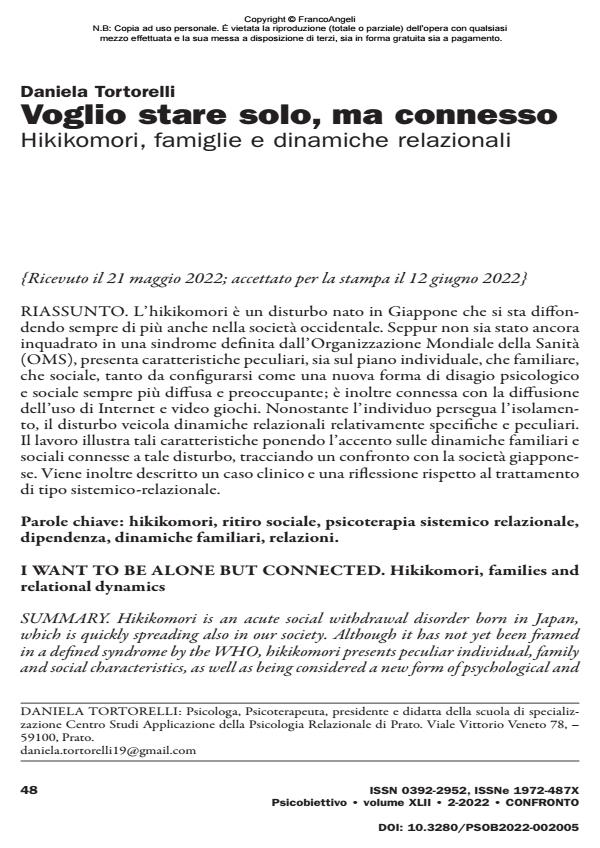I want to be alone but connected. Hikikomori, families and relational dynamics
Journal title PSICOBIETTIVO
Author/s Daniela Tortorelli
Publishing Year 2022 Issue 2022/2
Language Italian Pages 20 P. 48-67 File size 678 KB
DOI 10.3280/PSOB2022-002005
DOI is like a bar code for intellectual property: to have more infomation
click here
Below, you can see the article first page
If you want to buy this article in PDF format, you can do it, following the instructions to buy download credits

FrancoAngeli is member of Publishers International Linking Association, Inc (PILA), a not-for-profit association which run the CrossRef service enabling links to and from online scholarly content.
Hikikomori is an acute social withdrawal disorder born in Japan, which is quickly spreading also in our society. Although it has not yet been framed in a defined syndrome by the WHO, hikikomori presents peculiar individual, family and social characteristics, as well as being considered a new form of psychological and social distress, that is quickly affecting a larger number of people. It is also connected with the spread of the use of internet and video games. Although the person pursues the isolation, hikikomori carries specific and peculiar relationship dynamics. This article provides an overview of the specific features and highlights both family and social relationship dynamics. It also provides a comparison with the Japanese society, and it describes a clinical case treated with the systemic relational approach.
Keywords: hikikomori, social withdrawal, systemic relational psychotherapy, addiction, family dynamics, relationship
Daniela Tortorelli, Voglio stare solo, ma connesso Hikikomori, famiglie e dinamiche relazionali in "PSICOBIETTIVO" 2/2022, pp 48-67, DOI: 10.3280/PSOB2022-002005